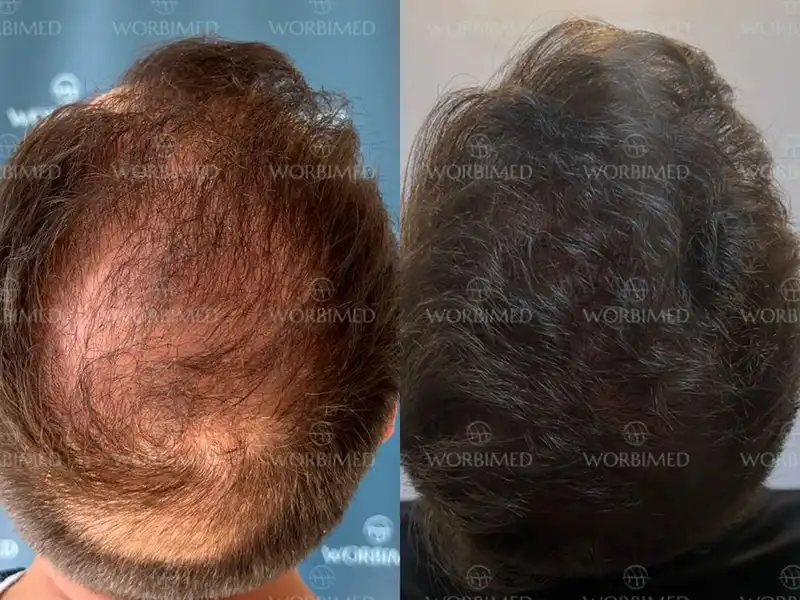Hair transplant after 10 years
- Hair transplant after 10 years
- What happens to transplanted hair as you age?
- How long does a hair transplant last?
- Hair transplant after 10 years results before and after
- Will I need a second hair transplant after 10 years?
- Does a hair transplant last for 10 years?
- Does transplanted hair turn grey?
- FUE hair transplant after 10 years
- Stages of hair growth
- Factors influencing the longevity of hair transplant after 10 years
How long does a hair transplant last?
Successfully transplanted hair will last a lifetime. These hairs are taken from parts of your head that don't easily lose hair, so they keep growing just like the rest of your hair does. As you get older, this transplanted hair will age too. It can turn grey or white, just like your natural hair, because of your genes. Also, just like any hair, it will go through cycles where it falls out and grows back. This means your hair transplant will look natural and change with you as you age, giving you a full head of hair for years to come.
Hair transplant after 10 years results before and after
Looking at before and after pictures of hair transplant after 10 years results, it's clear the procedure can make a big difference. In the photos, you can see how well the implanted hair has held up over a decade. It looks good and hasn't fallen out, showcasing a significant transformation. These images highlight the journey of hair growth, from thin or balding areas to fuller, denser hair. The after pictures, taken 10 years later, reveal how the transplanted hair blends seamlessly with the natural hair, maintaining a healthy appearance.
Will I need a second hair transplant after 10 years?
A second hair transplant after 10 years might be necessary for patients who continue to experience hair loss even after their first transplant. This doesn't mean the hair that was transplanted the first time will fall out—those hairs are there to stay. Instead, it's the hair that was present before the transplant, which might continue to thin or fall out over time. This is why some individuals opt for a second hair transplant: to address the ongoing natural hair loss and maintain a full head of hair. However, the need for a second procedure varies from case to case, depending on each person's unique hair loss pattern and how their hair responds over time.
Does a hair transplant last for 10 years?
Yes, it does, and even longer. A hair transplant isn't just a temporary fix; it's a long-term solution for hair loss. Transplanted hair does not fall out even after 10 years. The hair that's transplanted comes from parts of your scalp that are resistant to balding, which means this new hair is there to stay. Over 10 years, you'll see that the transplanted hair doesn't just disappear. It grows, ages, and changes just like the rest of your hair, possibly turning grey as you get older.
Does transplanted hair turn grey?
Yes, transplanted hair can turn gray with age. Transplanted hair follows the same natural aging process as the rest of your hair. This happens because the pigmentation in the hair follicles decreases over time. While the transplanted hair may start off with its original color, it's subject to the natural process of greying just like the rest of your hair. However, the timing and extent of this change can vary depending on factors like genetics. So, while a hair transplant can make your hair look fuller, it doesn't stop it from turning grey as you get older.
FUE hair transplant after 10 years
FUE hair transplant after 10 years can still look great. With FUE, hairs are moved from thick areas to thin ones. Over a decade, these transplanted hairs keep growing and blending in well. While your original hair might thin or turn grey with age, the transplanted ones stay strong. Many people feel happy with their fuller hairline and thicker hair, even years later. Just taking good care of your hair can help keep the results looking good for a long time. So, if you're considering FUE, know that it can offer a lasting solution to hair loss.








